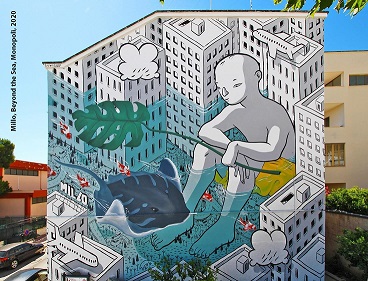Una sensibilità umana nel giocattolo animale: Riflessioni tra postumanismo, resilienza e children’s literature
DOI:
https://doi.org/10.54103/2035-7680/18686Parole chiave:
letteratura per l’infanzia; giocattoli; postumanismo; resilienza; animal studiesAbstract
I giocattoli con tratti fisici non antropomorfizzati in letteratura, specie quando rivolta a un pubblico infantile, si rivelano come un utile strumento per riflettere sulla distinzione tra ‘umano’ e ‘non umano’. Il corpo artificiale del giocattolo e la caratterizzazione animale incarnano, infatti, in modo evidente il concetto di alterità rispetto all’idea stereotipica di umanità. Ispirati dalle vicende narrate, i giovani lettori possono trarre degli essenziali insegnamenti, quali le capacità di empatia e di resilienza ai traumi di piccola o grande entità che ciascuno può incontrare nel corso della vita. L’introduzione critica a queste riflessioni è completata dall’analisi letteraria circa la caratterizzazione dei giocattoli in alcuni testi per l’infanzia: il giocattolo-coniglio in The Velveteen Rabbit (1922) di Margery Williams, i giocattoli-topi in The Mouse and His Child (1967) di Russell Hoban e il giocattolo-orso in Winnie-the-Pooh (1926) di A. A. Milne.
Metriche
Riferimenti bibliografici
Blount, Margaret. Animal Land: The Creatures of Children’s Fiction. William Morrow, 1975.
Bradford, Clare, et al. New World Orders in Contemporary Children’s LIterature: Utopian Transformations. Palgrave Macmillan, 2011.
Campagnaro, Marnie. Le terre della fantasia. Donzelli, 2014.
Canham, Stephen. “Reassuring Readers: Winnie-the-Pooh.” Children's Literature Association Quarterly, vol. 5, no. 3, pp. 1-27.
Derrida, Jacques. “The Animal That Therefore I Am (More to Follow).” Translated by David Willis, Critical Inquiry, vol. 28, no. 2, 2002, pp. 369-418.
---. The Animal That Therefore I Am. Translated by David Willis, Fordham University Press, 2008.
Duschinsky, Robert. “Tabula Rasa and Human Nature.” Philosophy, vol. 87, no. 4, 2012, pp. 509529.
Flanagan, Victoria. “Posthumanism: Rethinking ‘The Human’ in Modern Children’s Literature.” The Edinburgh Companion to Children’s Literature, a cura di Clémentine Beauvais e Maria Nikolajeva. Edinburgh University Press, 2017, pp. 29-41.
Flynn, Simon. “Animal Stories.” International Companion Encyclopedia of Children’s Literature, a cura di Peter Hunt, seconda edizione, volumi 1 e 2, Routledge, 2004, pp. 418-435.
Hoban, Russell. The Mouse and His Child [1967]. Puffin Books, 1993.
Hunt, Peter. Introduction. Literature for Children: Contemporary Criticism, a cura di Peter Hunt, Routledge, 1992, pp. 1-17.
Jaques, Zoe. “Toy.” Children’s Literature and the Posthuman: Animal, Environment, Cyborg. Routledge, 2015, pp. 209-234.
---. “Animal Studies.” The Edinburgh Companion to Children’s Literature a cura di Clémentine Beauvais e Maria Nikolajeva. Edinburgh University Press, 2017, pp. 42-54.
Kuznets, Lois Rostow. When Toys Come Alive: Narratives of Animation, Metamorphosis, and Development. Yale University Press, 1994.
Locke, John. Some Thoughts Concerning Education [1693]. J. and R. Tonson, 1729.
Lurie, Alison. Not in Front of the Grown-Ups: Subversive Children’s Literature. Cardinal, 1991.
Malaguti, Elena. Educarsi alla Resilienza. Ericksen, 2005.
Milne, A. A. Winnie-the-Pooh [1926]. Metheun Young Books, 1998.
Nikolajeva, Maria. “Devils, Demons, Familiars, Friends: Toward a Semiotics of Literary Cats.” Marvel and Tales, vol. 23, no. 2, 2009, pp. 248-267.
Nodelman, Perry e Mavis Reimer. The Pleasures of Children’s Literature. Allyn and Bacon, 2003.
Tolkien, J. R. R. Tree and Leaf. Unwin Books, 1964.
Wannamaker, Annette. “A ‘Heap of Meaning’: Objects, Aesthetics and the Posthuman Child in Janne Teller’s Y. A. Novel Nothing.” The Lion and the Unicorn, vol. 39, no. 1, 2015, pp. 82-99.
Williams, Margery. The Velveteen Rabbit (or How Toys Became Real) [1922]. Penguin Putnam Inc., 1987.
Zeiter, Pedra. “Anthropomorphism in Children’s Literature.” Mythbusters, 25 mar. 2015. https://bustingmythology.wordpress.com/2015/03/25/anthropomorphism-in-childrens-literature/. Consultato il 25 sett. 2021.
Dowloads
Pubblicato
Come citare
Fascicolo
Sezione
Licenza

Questo articolo è soggetto a licenza Creative Commons Attribution-NonCommercial-NoDerivatives 3.0 International License.




